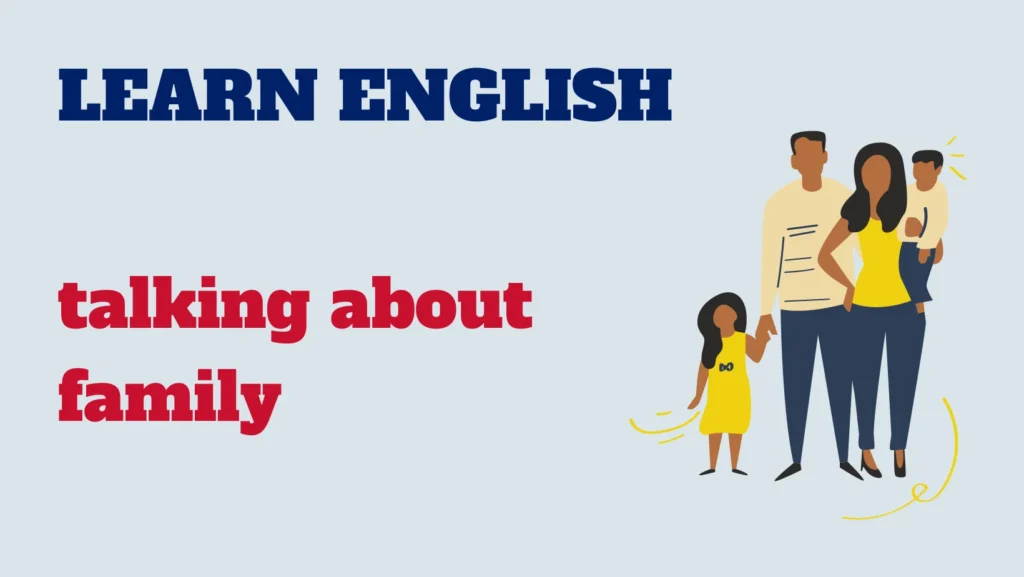Talking about your family is an important part of daily communication. Whether you’re having a conversation with friends, filling out administrative forms, or giving a presentation, knowing how to talk about your family in English is essential.

In this lesson, we’ll explore different ways to express family relationships in English and provide practical examples.
Family members
Let’s start with the basic members of a family and how to name them in English.
Here are some key terms to know:
- Parents: father, mother
- Siblings: brother, sister
- Grandparents: grandfather, grandmother
- Children: son, daughter
- Aunt: mother or father’s sister
- Uncle: mother or father’s brother
- Cousin: aunt or uncle’s son or daughter
- Niece: sister or brother’s daughter
- Nephew: sister or brother’s son
Affectionate terms
In English, it’s common to use affectionate terms to refer to family members.
Here are some examples:
- My sweetheart
- My darling
- Dad
- Mom
Family ties
There are different ways to describe family relationships in English.
Here are some examples:
- My older brother
- My younger sister
- Maternal uncle
- Cousin (female or male)
- Stepfather
Formal presentation
When filling out administrative forms or giving a formal presentation, it’s important to know how to use appropriate terms.
Here are some useful expressions:
- Father
- Mother
- Spouse
- Son/Daughter
- Brother/Sister
Talking about your family in English requires a good understanding of appropriate terms and expressions. By grasping family members, affectionate terms, family ties, and formal presentations, you’ll be able to communicate effectively about your family in English. Feel free to practice these terms and use them in your daily life to enhance your language skills and boost your confidence during family conversations in English.



